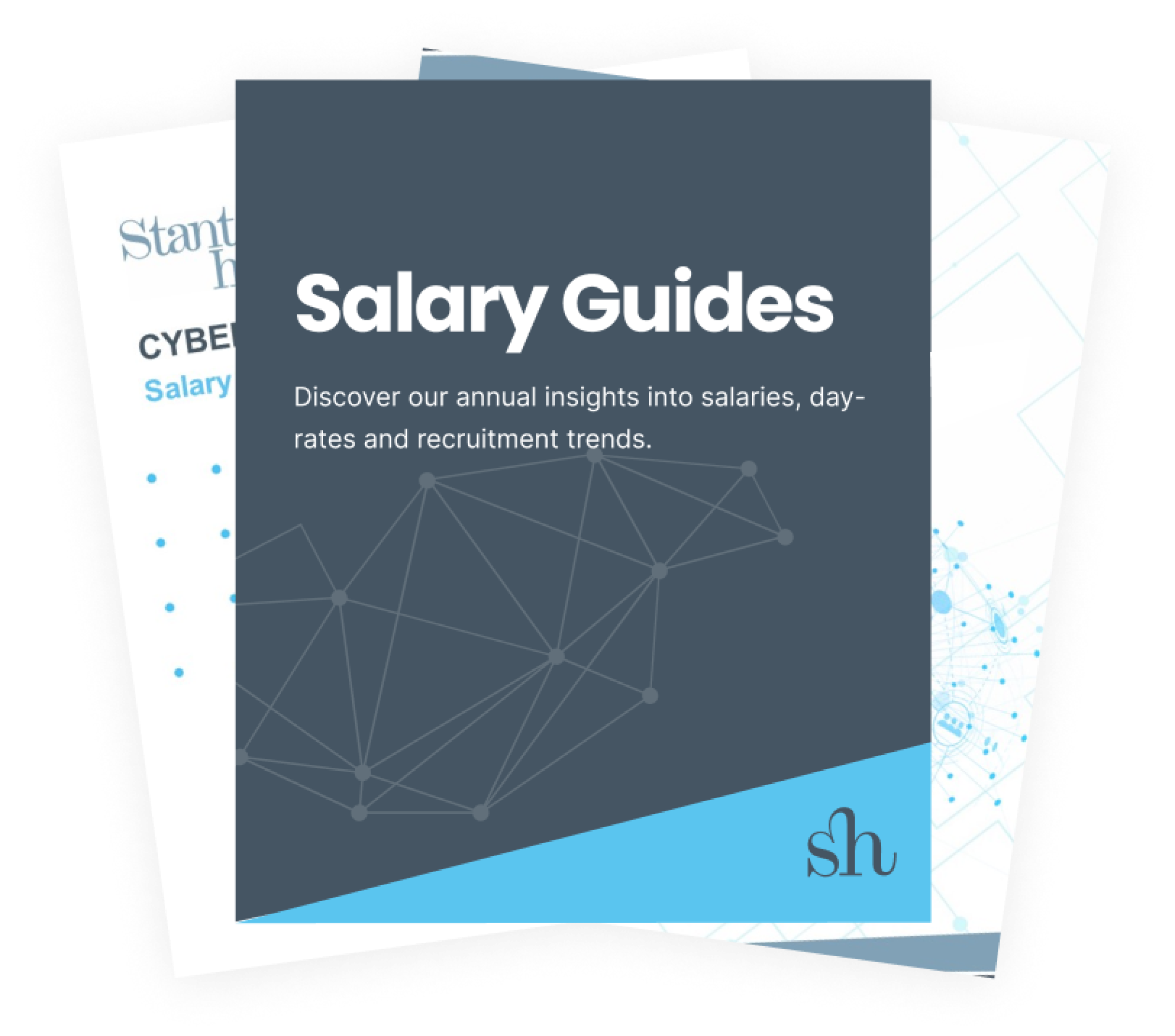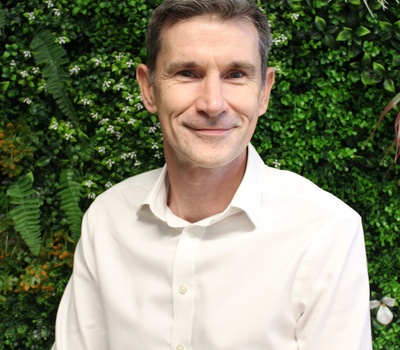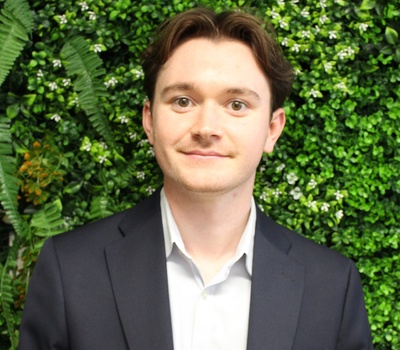
Is the World of Work Ready to Embrace Neurodiversity?
I am a mother of two, an eight-year-old daughter and a six-year-old son. My little boy has been diagnosed with Autism Spectrum Disorder (ASD), Attention Deficit Disorder (ADHD), Sensory Processing Disorder and Sleep Disorder. He is completely non-verbal.
As a parent, I think you always envision your child’s path in life, at least to some extent. You picture their first steps, their first words and imagine what they will be doing and by when.
By the time my son was two, we realised that he was ‘different’.
All our pre-described notions and expectations quickly become nothing when he was first diagnosed. This was incredibly hard to accept - to come to terms with. As we struggled with the day-to-day and learned more, I felt grief for the loss of the ‘normal’ that we would never have - that his big sister would never have.
If I am honest, I still live in hope I might one day hear him use words, or even call me mummy. But above all things I want him to be happy and to understand him.
My little boy has a beaming smile and is gentle and affectionate, but not when he is unbalanced / dysregulated. Learning what causes this and ensuring that he is unencumbered by external factors that we may take for granted has been a huge learning curve. I cannot begin to list the adjustments we have made as a family.
Trying to understand why he can’t tolerate certain clothing, why he eats mud and foliage on forest walks, why he is a nocturnal being, why certain noises cripple him and why he self-harms are all questions that we never thought we would be confronted with as parents. Navigating the poorly funded and ill-equipped educational system was another consternation we were woefully unprepared for too.
I’ve worked in the recruitment industry for all of my professional career and as I navigate schooling for a child with special educational needs, I wonder if the world of work is ready, willing and able to accept and help the likes of my boy, perhaps those who are ‘higher functioning’ but still face many of the same restrictive challenges in their day-to-day lives?
How do the special educational needs of so many translate into special employment needs and are employers making the right (or any) adjustments to include them? Neurodiversity has become quite the buzzword in the world of work, so what does it mean?
Neurodiversity, neurodivergence & autism
Neurodiversity. Noun. “The range of differences in individual brain function and behavioural traits, regarded as part of normal variation in the human population (used especially in the context of autistic spectrum disorders).” Oxford Dictionary
Neurodiversity points to the fact that every person has a unique nervous system and thus a unique combination of skills, abilities and needs. The neurodiversity movement asserts that individual differences in brain functioning should be regarded as normal variations within the human population. The term, coined and popularised by Judy Singer, also describes the importance of including all neurotypes to ensure a thriving human society.
The self-identifying label of ‘neurodivergent’ originally focused on those who are autistic, but it is now used to describe those who think, behave, and learn differently to what is ‘typical’ in society. As well as autism this includes dyslexia, dyspraxia, ADHD, Tourette’s syndrome, acquired brain injury and chronic neurological conditions.
Some other conditions such as OCD, schizophrenia, anti-social personality disorder, borderline personality disorder, bipolar disorder and dissociative disorder can be classed as a form of neurodivergence too. It is also common for neurodivergent people to have more than one neurodivergent label / category. For example, autism and ADHD or dyslexia and dyspraxia.
It is estimated that about 15-20% of the population is ‘neurodivergent’. Autism Spectrum Disorder (ASD) is a developmental disorder of variable severity that is characterised by difficulty in social interaction and communication and by restricted or repetitive patterns of thought and behaviour. This means there is a spectrum of strengths and challenges, of abilities and disabilities.
Many are completely non-verbal, or unable to care for themselves, while others can live on their own and have unique skills such as extremely high levels of concentration, excellent memory or incredible attention to detail. General awareness of these almost ‘superhuman’ traits, which are often associated with ‘high-functioning’ autism or Asperger’s syndrome, has increased significantly over the last couple of decades, in part, due to more representation in popular culture. The reality is that this does not represent all or even most autism. Autism really is a spectrum and is often accompanied by varying degrees of sensory sensitivities and medical issues such as gastrointestinal (GI) disorders, seizures or sleep disorders, as well as mental health challenges such as anxiety, depression and attention issues.
But no matter where they are on the spectrum, many capable autistic adults*, or indeed those with other neurodivergent classifications, have a very hard time in finding a job.
An untapped talent pool
Research by the National Autistic Society has shown that only 15% of autistic adults in the UK are in full-time employment and 9% in part-time employment. but the vast majority want to work.
This lost employment has been estimated to cost the UK £12bn per year, but of course, the waste of potential and harm done by the exclusion of these talented people from the workplace cannot be quantified.
There have been numerous studies around the world that show that those on the neurodivergent spectrum have the capacity to think beyond typical boundaries and can help find creative solutions to complex problems. Neurodiverse minds work unconventionally, which means they may be capable of developing revolutionary ideas, helping organisations to increase their overall innovation capability.
According to the National Autism Indicators reports by Drexel University in Philadelphia, 51% of autistic people in work, in the US, say their skills are higher than those their job requires. Another study by EY in 2019 found that individuals with dyslexia display the most in-demand skills for the workforce of the future. Their unique skill set can play a role in their leadership and creativity.
Yet today, so many organisations overlook neurodiversity when they discuss disability and only a fraction include neurodiversity in their D&I activities or have even thought to adapt their working environments or recruitment processes.
Conventional hiring processes can cause significant barriers
Many on the autism spectrum spend their lives ‘masking’ and this constant exertion of trying to ‘fit in’ can increase repetitive and restrictive behaviours, aggressive outbursts, poor eye contact / too much eye contact and ‘stimming’, to name but a few. Individuals may also be hypersensitive to sounds, sights, smells or touch and require a longer amount of time to process information.
So, imagine how overwhelming a conventional, conversational interview, that requires lots of eye contact, that starts and ends with a handshake, might feel for some individuals on the spectrum.
It is time that organisations re-evaluate their hiring strategies, right the way through the applicant journey, building in interventions and adapting processes so that those with hidden disabilities or those who identify as neurodivergent are not excluded. This way we can embrace everybody’s unique strengths, people can bring the best of themselves to the workplace, and we can create working environments where we’re all able to thrive.
While in the past we have seen a lot of organisations attempting to change neurodivergent people so they can better ‘fit in’, I believe that the recruitment and development of people in the workplace should be about ‘culture add’ and not ‘culture fit’. This is true inclusion.
There are of course examples of organisations that have truly embraced this philosophy and have shifted their perspective from ‘fixing’ the differences to learning how to work with them.
SAP, JP Morgan, EY and Ford have all launched neurodiverse hiring programmes but perhaps it was Microsoft’s infamous Autism Hiring Program, launched in 2015, that set the global benchmark for other organisations to follow.
Applicants all engage in an extended interview and selection process that focuses on workability, team projects, and skill assessment.
“We learned that our traditional hiring process, the front door to Microsoft, could be a major barrier of entry for many talented candidates. By adjusting the shape of the door, we could help candidates showcase and demonstrate their talent to hiring managers. Through hosting several hiring cohorts, we’ve also learned about our onboarding process and how we can provide training for hiring managers and teams to make sure we create an inclusive environment.”
Neil Barnett, Director of Inclusive Hiring and Accessibility, Microsoft
Last year, EY announced their first Neurodiverse Centre of Excellence in the UK in an effort to build what they call ‘multi-dimensional high-performing teams’, to help boost client innovation. They have shifted from a behaviour-based interview process to a performance-based one; hiring and training is done in small groups; and orientations are offered in advance for candidates to familiarise themselves with the workplace.
The impact of the pandemic & increased remote working
The pandemic gave rise to increased remote working which has proven to be a blessing but also a curse for many.
Some obvious physical barriers have been lifted, such as the need to commute, and VC technology also provides better options for communication, such as turning off video or turning on accessibility functions like captioning. At the same time, however, many individuals have not been getting access to the same levels of support from their colleagues and managers as they are no longer physically close to them.
In an interview last year, Microsoft software engineer Serena Schaefer, an advocate for neurodiverse employees in tech, said of remote working:
“There have been some positives. I tend to fidget a lot just to keep my hands busy and that may look kind of strange in a working environment. But working remotely, no one is going by my office wondering why I'm twirling a pen all the time. It lets me feel like I can be more relaxed and not have to constantly make sure that I am suppressing myself. I've found it hard to maintain eye contact with people but looking at a computer screen makes it a little easier. You can stare at the camera. It's a bunch of small things that add up. It can be a bit isolating, but we do online games, virtual escape rooms, things like that. Nothing too negative, I would say it's more positive.”
Serena Schaefer, Software Engineer, Microsoft.
Now as many employers adopt a hybrid working model it is important that we don’t forget the lessons learned.
Tips to making your hiring process neurodiverse smart
Employers have a vital role to play in changing perception and taking action to include those that are neurodivergent. After all, neuro-differences have existed throughout human history and should simply be appreciated as a different way of thinking and behaving - just as we recognise differences in sexual orientation, ethnicity, or gender.
Here are some top tips from digital coaching platform Ezra:
1. Don’t spring any surprises on your candidates. Be clear about what will happen in the interview, who will be there and what is expected. You could also offer the candidate a list of questions beforehand so that they can prepare.
2. Make sure to be clear and concise with your questions. Speak with your fellow interviewers to decide who will ask what questions, to avoid any confusion.
3. Check if the candidate needs any adjustments. Not only does this make the process fairer, but it means the candidate is more likely to feel comfortable, and so you’ll see their best side.
4. Remember what skills are relevant for the specific role that you’re interviewing for. Avoiding eye contact, stuttering and a lack of small talk might stand out in interviews, but if the candidate won’t be customer facing, consider if this really matters.
5. Long-term, consider your whole interview process. Could you offer a few different methods of assessment? Could the candidate do a take-home assessment instead? Whilst reviewing your process is time consuming, ultimately it will help future candidates and help you access a larger talent pool.
Useful resources
A guide to neurodiversity in the modern workplace
Digital HR leaders podcast – addressing the needs of neurodiverse individuals in the workplace
D&I Leaders – neurodiversity at work summary report 2021
Neurodivergence’s Impact on Mental Health
* There is continued debate in the autism community over identity-first (“autistic person”) versus person-first (“person with autism”) language. The discussion has gained in recent years, particularly as more adults on the autism spectrum have come of age and are advocating to have their own voices represented. Many in the autism community have shifted toward a preference for identity-first language, explaining that their autism is an inextricable piece of their identity and personality. Saying “I’m autistic” or she’s autistic” is no different than saying “I’m nearsighted” or “she’s shy”. Many who prefer identity-first language point out that saying that a person “has autism” or students “with autism” sound as if autism is a disease or illness that needs to be fixed. They feel that separating the diagnosis from the person contributes a stigma to autism.



















